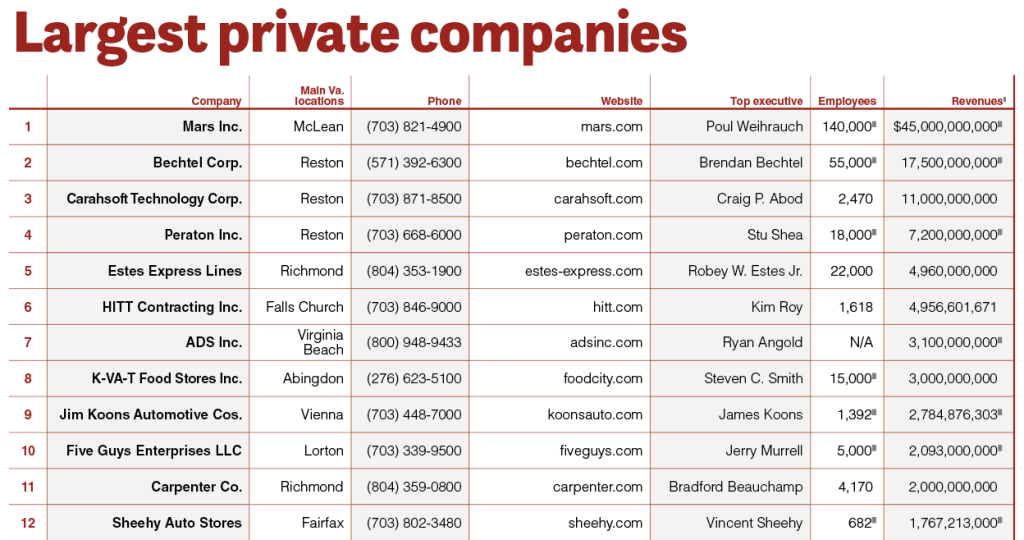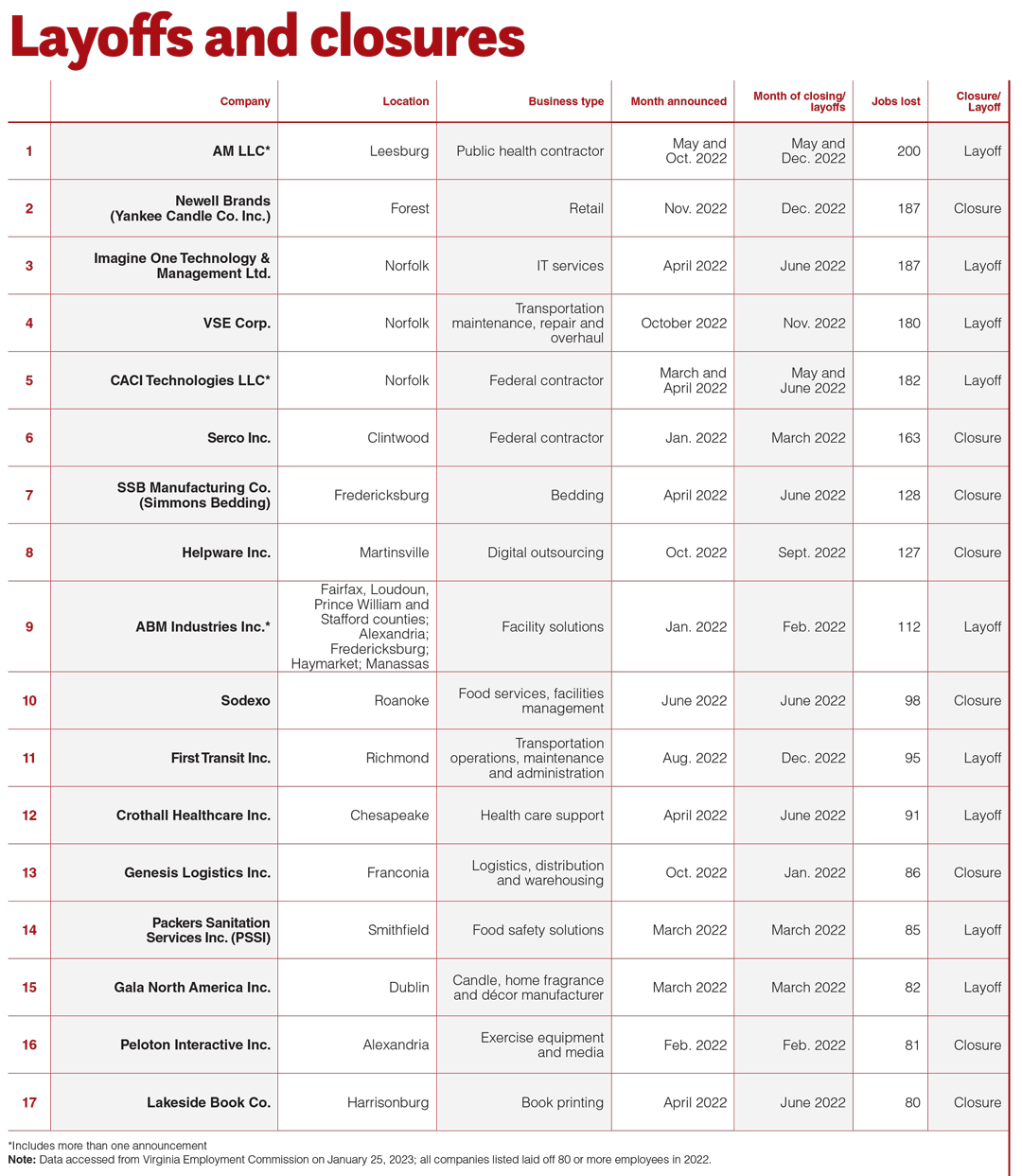In 2007 — the same year that Apple unveiled the iPhone and Netflix introduced the idea of “streaming” movies — Buddy Rizer started aggressively targeting an industry that many of the people he worked for in Loudoun County didn’t yet fully comprehend.
“It was not an easy story to tell at first,” Rizer recalls of his early years pursuing data centers as Loudoun’s executive director of economic development. “I remember a couple of public hearings sweating through my suit as I was getting grilled by our [board of supervisors]. One of the supervisors said, ‘Mr. Rizer, if everything is going to the cloud, why do we need data centers?’”
Sixteen years later, more than 70% of the world’s internet traffic comes through Data Center Alley — six square miles in Loudoun’s Ashburn area.
Northern Virginia is the epicenter of the world’s data landscape. In 2022, the region accounted for 64% of the total new data center capacity brought online in primary markets across the U.S., according to the North American Data Center Trends Report by CBRE.
Data centers are huge tax generators — Loudoun County officials predict data centers will pump around $570 million in personal property taxes into county coffers next year alone.
But the blistering pace of development is drawing scrutiny from residents, environmentalists and local officials who worry about the industry’s high electricity demands and the centers’ impact on neighborhoods. Northern Virginia’s experience holds lessons and opportunities for other areas of the state that stand poised to cash in on the demand for data center sites.
Big data
In 2022, 21% of all new economic development investment in the commonwealth announced by the Virginia Economic Development Partnership — a total of
$951 million — was from new and expanding data centers. That number represents a significant decline from 2021, when VEDP announced $6.8 billion in new data center investments — 62% of an overall statewide total of more than $10.9 billion in economic development investments that year, and 2020, when data centers accounted for 81%, or $7.9 billion, of about $9.8 billion in investments announced by VEDP.

But the January announcement of Amazon Web Services’ plan to invest $35 billion in Virginia data centers by 2040 proves the market for data center sites remains robust. AWS is the world’s largest cloud computing provider, and its expansion reflects its efforts to stay ahead of rivals Microsoft Azure and Google Cloud Platform in the business of selling offsite data storage infrastructure to businesses.
“Our internal research tells us that the demand for the infrastructure is going to exceed the supply for probably the next decade,” says Rizer. “There is a long runway.”
The world’s need for data storage has grown exponentially in recent years, along with the number of gadgets, apps and services upon which consumers and businesses increasingly rely.
Massachusetts-based market intelligence firm International Data Corp. predicts that the global datasphere — all the data that exists in the world — will more than double in size from 2022 to 2026, driven by data-intensive technologies such as artificial intelligence, autonomous vehicles and the fact that everything from the refrigerator in your kitchen to the traffic signal down the street can now transmit data.
But all the documents, financial records, photos, texts and entertainment content that we access every hour of the day from the cloud aren’t exactly virtual. This data is stored on servers housed in data centers — giant structures strategically located for their proximity to fiber optic networks and electric transmission lines.
Data Center Alley shows the progression of data center architecture over the past decade. Older data centers are one-story boxy industrial concrete blocks. Newer structures are multistory buildings — some over 1 million square feet — with windows added to make them look like office buildings. Security gates and yards packed with diesel backup generators are common features on these properties.
Power hungry
Powering the millions of servers housed in data centers requires a robust supply of electricity. Those servers generate heat and can’t perform optimally if the building temperature rises too far above 80 degrees. So even more electricity is needed to run the HVAC systems that regulate data centers’ air temperature.
Data Center Alley — which represents 6% of Loudoun’s entire land mass — consumes the same amount of electricity as all of the homes that Dominion Energy Inc. serves in Virginia Beach, Chesapeake, Newport News and Norfolk combined, according to Katharine Bond, Dominion’s vice president for public policy and state affairs.
Alan Bradshaw, Dominion’s vice president for strategic partnerships, says no other industry comes close to the power demands of data centers, which represent 21% of the utility’s Virginia power sales.
“These are big facilities in a dense area, and they are very unique, even compared to large industrial facilities like steel mills or shipyards,” he says.
Bradshaw says Dominion works closely with data center customers to understand their growth plans, and for the past few years it has provided a 15-year data center forecast to grid operator PJM.
PJM’s 2023 forecast calls for the PJM Dominion zone, which includes Central Virginia, Northern Virginia and Hampton Roads, to experience 5% annual growth in summer peak power loads for the next 10 years. This projected growth is 30% greater than what PJM was predicting two years ago, and it dwarfs the growth rate in any other utility zone PJM tracks, which includes Washington, D.C., and 13 states in the mid-Atlantic and Midwest. The next highest rate is 0.8%.
“That is exponential,” Bradshaw says. “One percent growth is large for a utility. It is all due to data center growth.”
While the capital costs of upgrades to power transmission and generation across Dominion’s system are shared by all ratepayers, Dominion officials point out that as such large customers, data centers are paying a proportionally large share of the cost needed to keep up. (Dominion, however, says it is unable to supply an amount for how much data center customers pay per year in Virginia.)
Bond says Dominion has partnered with data center operators on several Virginia solar projects that have been built specifically for the data centers’ use, at the expense of the data center operators. The industry’s aggressive sustainability goals also help support Dominion’s systemwide transition to clean energy sources, she says.
Crossing county lines

After Dominion announced last summer that it was temporarily suspending new service connections for data centers in Data Center Alley to ensure its transmission infrastructure could handle the added load, county officials had to readjust revenue projections to reflect later buildout dates for data centers. Rizer says county officials expect power to be fully restored by the end of 2025.
Meanwhile, the data center industry is still growing in the county — just not as rapidly as in recent years, Rizer says.
“It certainly hasn’t dampened the appetite for real estate in our community,” he says, adding that prices have climbed to between $2 million and $3 million per acre for data center properties. “It has delayed us somewhat, but it hasn’t stopped anything. No one has pulled out, and no one has said, ‘If I can’t get power in two years, I’m out.’”
Industry reports such as CBRE’s reference power constraints as a factor driving data center operators to examine other markets, both in Virginia and in other states. One of the areas that is seeing increased interest is neighboring Prince William County.
Christina Winn, Prince William’s executive director of economic development, says her county isn’t seeking to be as big a data hub as Loudoun, but data centers are a revenue-rich piece of the diversified industrial base Prince William wants to build. “We are not out actively recruiting data centers and marketing for them,” she says, but Prince William’s proximity to Loudoun and its skilled workforce have drawn the industry’s attention.
Prince William County currently has 39 data centers totaling 6.9 million square feet (with an additional 4.8 million square feet under development), compared with Loudoun’s more than 200 data centers that make up more than 26 million square feet (with at least 4 million more in development).
That level of development has grown Prince William’s data center tax revenues by a multiple of 15 over the past 10 years, from $6.2 million in 2012 to $101.42 million in 2022.
The Prince William Digital Gateway project, approved by county supervisors in November 2022 after months of debate and a 14-hour public meeting, creates a 2,100-acre technology corridor in a now-rural area near Gainesville. The project was spearheaded by individual property owners who wanted to bundle more than 200 parcels to market to data centers. Operators QTS Data Centers and Compass Data Centers announced proposals to build campuses in the corridor in the months leading up to the vote.
County officials estimate the development will bring in up to $400 million in annual tax revenue when built out, but not everyone wants to see Prince William’s data center presence grow so drastically.
In December 2022, a group of residents sued the supervisors over the vote, claiming that the board failed to consider the development’s impact on nearby Manassas National Battlefield Park, in addition to environmental impacts, noise and “visual blight.”
In January, Bob Weir, a vocal critic of the supervisors’ Gateway decision, won a special election for the Gainesville seat on the board (vacated by a supervisor who owns land within the Gateway project area). Weir had advocated for data centers to be kept away from residences and schools due to concerns about noise and data centers’ visual and environmental impact.
Growing pains
Residents have been vocal about the impact of recently opened data centers.
When Amazon opened a new Manassas data center last year, Planning Commissioner Tom Gordy began receiving complaints from residents of a neighboring subdivision about noise from the HVAC units that sit atop the data centers.

“Some people are literally having to live in their basements to get away from the noise,” he says of the neighborhood, where a tree buffer of a few hundred feet separates homes from data center buildings.
Kathryn Kulick, a leader of the HOA Roundtable of Northern Virginia, a citizen group formed largely in response to the data center issue, says it’s becoming clear that data centers should be kept away from schools and residences. “I had one homeowner text me in the middle of the night — it was 2 a.m. — saying, ‘I was just woken up by the noise and the walls of my home thrumming,’” she says.
Prince William County is trying to address these concerns, Winn says. The Board of Supervisors recently amended its noise ordinance to cover HVAC units, changed design standards and set up a community group to look more closely at data center impacts going forward.
“We are definitely hearing what residents are saying,” she says.
Josh Levi, president of the Data Center Coalition, a Loudoun-based industry advocacy group, says the hum from data center air handlers is a new issue limited to facilities like the Manassas center that are located just a few hundred feet from housing, and the industry is responding.
“You are seeing a lot more due diligence and intensity around the sound studies on the site-planning portion of the data center project to ensure you don’t have a problem going in, as opposed to having to mitigate something after the fact,” he says.
Kulick calls it a cautionary tale for other localities about the need for solid and careful land use planning before data centers are approved.
“It doesn’t mean everywhere there’s a power line, there should be a data center,” she says.
Northern Virginia state legislators Del. Danica Roem, D-Prince William, and Sen. Chap Petersen, D-Fairfax County, filed five bills during the 2023 General Assembly session seeking more limits and oversight on data center development — all of which were defeated. Only one — Petersen’s Senate bill commissioning a study on the industry’s environmental impact — made it out of its originating chamber, but it was tabled by a subcommittee in the House of Delegates.
In recent months, other localities have experienced angst over data center development.
In Warrenton, a Feb. 14 Town Council meeting lasted until 2:30 a.m. before council members voted 4-3 to approve Amazon Data Services’ request for a special-use permit to build a 220,000-square-foot data center. More than 100 residents spoke about the proposal, with many — including Academy Award-winning nonagenarian actor and Fauquier County resident Robert Duvall — saying the development would harm the town’s rural character.
The council’s decision is being challenged by a lawsuit filed in March by the nonprofit conservation group Citizens for Fauquier County and 10 local residents.
Outside NoVa
“Not in my backyard” concerns over data centers are less of an issue in Southwest Virginia, where an economic development team wants to turn a 4,000-acre reclaimed Wise County coal mine site into a data center campus.
“We can be a solution to the challenges the industry is facing in Northern Virginia,” says Will Payne, director of InvestSWVA, a public-private partnership created to market the region.
Payne and his team are meeting with data center developers, and two projects are in “serious due diligence,” he says.
A major selling point is tied directly to the site’s past. The underground cavities leftover from mining hold 6.5 billion gallons of 52-degree water. The reserve is sufficient to circulate water to cool 10 to 12 large data centers, Payne says.
Paired with renewable energy projects underway in the region, available land for onsite solar power development, and the fact that the region’s localities in 2021 lowered their data center equipment taxes to 24 cents per $100 — the lowest rate in Virginia — Payne is optimistic.
Wise is already home to the 65,000- square-foot Mineral Gap Data Center, which opened in 2017. Owner DP Facilities built the secure data center to serve government agencies, but it is also marketed to commercial clients.
“This is a transformational industry for this region,” Payne says.
Assets abandoned by departing industries also played a role in suburban Henrico County’s development as a Central Virginia data hub. Henrico’s first data center came in 2011 when QTS Realty Trust Inc. bought the 1.3 million-square-foot White Oak Semiconductor (later Qimonda AG) plant, which closed in 2009.
Henrico officials want to capitalize on QTS’ network access point (NAP) in Henrico. It was the first inland facility to connect to several new high-speed subsea internet cables that land in Virginia Beach, connecting Virginia to France, Brazil and Spain. A cable connecting to South Africa and India is planned to be completed later this year, and a fifth “confluence” cable will connect various cities along the East Coast.
“If you are doing business with Europe, Africa and soon to be Asia, the fastest connectivity is going to run through Henrico,” says Henrico Economic Development Authority Executive Director Anthony Romanello.
Henrico’s profile continues to grow. Facebook parent company Meta Platforms Inc. has so far spent more than $1 billion building its 2.5-million-square-foot data center complex in the EDA’s White Oak Technology Park. Meta purchased another 475 acres from the EDA in November 2022 for $35.3 million to expand its footprint. And QTS last year bought another 226 acres within the technology park to expand its Henrico data center campus by an additional 1.5 million square feet — more than doubling its initial footprint.
Romanello notes that data center tax revenues to the county have grown from about $2 million in 2017 to over $10 million in 2022.
Including available land in the EDA’s technology park and privately held land in the eastern part of the county, Romanello estimates Henrico now has about 1,300 acres suitable for data center development.
“That puts us in a position to continue to grow,” he says.
















